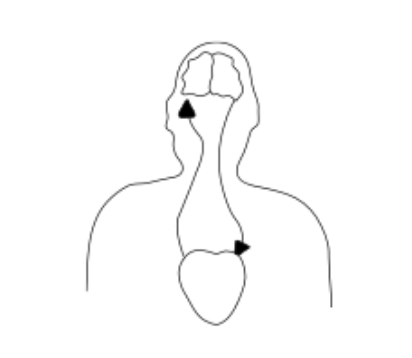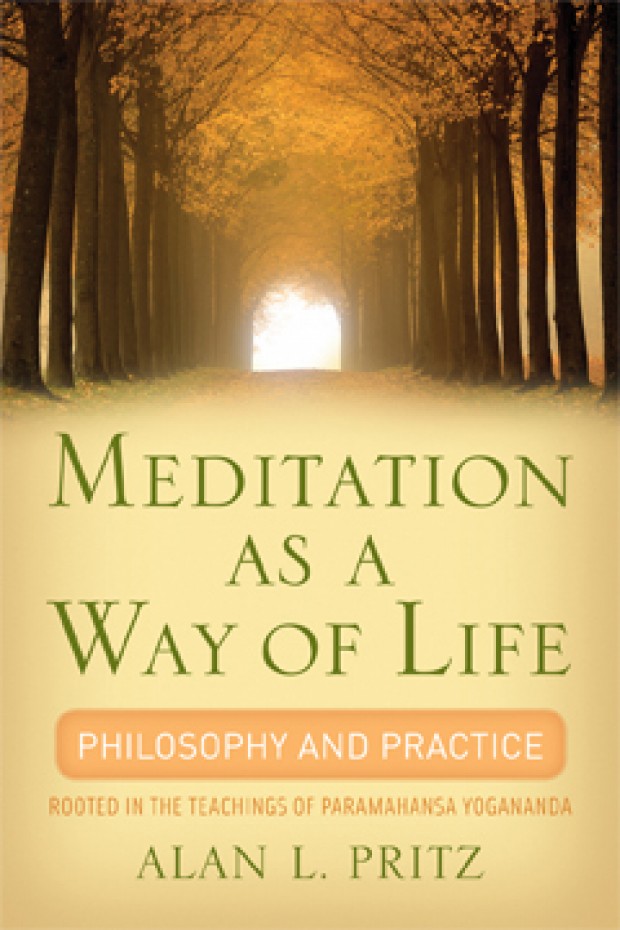The following on meditation is excerpted from Meditation as a Way of Life: Philosophy and Practice by Alan L. Pritz.
Skills are usually considered to be acquired traits, unlike natural talent. Yet even talent can be improved on and become extraordinary through proper training and refinement. Our next step of developing concentration is no exception. Some consider it the by-product of a solid work ethic or the reflection of innate character; others feel it arises automatically by focusing on whatever is at hand. Both ideas have merit, yet neither examines the underlying nature of concentration and, accordingly, how it can be reliably honed. Those who lack concentration can acquire it; those with an inherent ability can improve what they already possess.
What precisely is concentration? It is the power to withdraw mental awareness from objects of distraction and place it uninterruptedly on a select item or idea. It is developed and enhanced by learning to eradicate objects of distraction and then directing pristine perception intentionally in a one-pointed manner. What are objects of distraction? These consist of sensory impressions plus the related thoughts and memories they beget. How can the mind be freed from objects of distraction? Through energy control and internalization. The importance of both is illustrated here:
Imagine having an important work assignment due tomorrow. Entering your study, you close the door and start formulating an action plan. The phone rings; you ignore it. Nothing is going to disturb you. Everything is going fine, but the room feels stuffy so you crack a window. Now you hear the neighbor kids playing basketball; they are making a racket but certainly having fun. You momentarily drift and recall some of your own earlier pickup games, particularly the time you had to play against that gorgeous tomboy! Isn’t life funny? Who knew the two of you would eventually get married? And what an amazing honeymoon in the Caimans! So it goes . . .
This entire scenario unfurled from just two sense impressions, feeling and hearing. All the subsequent thoughts were an ungoverned sequence of reactions. Imagine how we respond to sights, smells, and tastes, too! In short, the senses must be mastered to keep the mind in check. Otherwise we are constantly subject to the symphony of impressions and associated memories they evoke. To understand how such control is accomplished, recall the main principle discussed in the chapter on internalization: Sensory perceptions are temporarily disengaged when energy is withdrawn from the body in deep relaxation. This tenet is imperative for sense management and, consequently, for developing concentration. Pause for a moment to acknowledge what we have learned thus far and appreciate the interrelated factors that promote spiritual growth. Everything is energetic and is of Spirit. Understanding and applying the principles that govern this cosmology foster optimal spiritual realization, regardless of one’s faith tradition. As simple as this tenet may sound, it is profound. The mystery of creation and learning how to attain union with the Creator are not matters of idle speculation. They are the stuff of inner science and direct realization.
Let’s further our process by examining more advanced aspects of internalization and concentration.
Controlling the Heart: Governing the Sense Mechanism
Ancient yogis observed that life force descends from the brain through the heart, then into the sensory-motor nerves. These, in turn, report and respond to the external world. Systematic relaxation reverses energy currents from the muscles and, to a significant degree, the sensory motor system. But more is required to completely disengage the senses and induce superior interiorization. Withdrawal of energy must be extended to include the heart, through which energy flows in the first place. The way to achieve this is simple and yet extremely effective: watching the breath. Cardiopulmonary functions are intimately connected, and, as such, breath patterns have reciprocal impact on heart activity. Passive yet deliberate observation of the breath has the effect of calming the heart, especially when done in conjunction with certain techniques. As the heart rate lessens, the energy pouring into the heart reverses course, withdraws back to the astral spine, and flows upward to the brain. At this juncture the sensory-motor nerves become disconnected, freeing us to concentrate fully without disturbances arising from external sense impressions.
Breathing is necessary for physiological processes. Oxygen intake serves to change waste-bearing venous blood into vitalized arterial blood and to provide energy for the body. The waste matter is derived from metabolic functions that axiomatically produce cell decay. When metabolic activity is high, venous blood production rises, as does the need for oxygen to cleanse the system. Likewise, as metabolic toxins are reduced, less venous blood is created; oxygen requirements decrease, and we breathe less. If no such waste is produced, respiration can stop, at least temporarily. For this halt to occur, cellular decay must be suspended—a feat achieved with pure diet, halting bodily motion, and stilling the heart. A related technique that quiets the heart will be taught, but before doing so, several essential points should be revisited or highlighted.
Improper eating pollutes the system, requires excess energy to digest, and keeps the mind body-bound. Proper diet and periodic fasting eliminate impurities and free energy for higher applications. Sound has power. Certain pitches can shatter glass, yet sonic technology also has subtle applications that can enhance spiritual pursuits. Certain tones calm the heart and lungs when made in conjunction with watching the breath and physical stillness. These sound phenomena form the basis for complete interiorization and concentration.
Movement is natural and a hallmark of life, yet is also a prime generator of metabolic waste. Stillness achieved by deep, systematic relaxation can significantly reduce cellular decay and decreases the need for blood purification. Corresponding heart and lung activity lessen as metabolic waste drops. Heart and lung actions can stop completely in states of advanced calmness. Rather than cause death, this condition of superrelaxation gives rise to a conscious breathless state in which energy is redistributed throughout the body, vitalizing and sustaining it on a subtle level. The great rest that complete cessation of movement, internally and externally, gives the body adds to its vitality when active, can enhance longevity, and enriches the capacity for subtle inner perception while meditating.
Some spiritual adepts can forgo eating, breathing, or other common life functions for extended periods—sometimes indefinitely—because they have mastered living solely by life force. Jesus referred to this condition by declaring, “Man shall not live by bread alone, but by every word that proceedeth out of the mouth of God.” The “mouth of God” is the medulla oblongata, through which cosmic energy enters the body, and the “word” is vibrating cosmic life force. Examples from different faiths include Giri Bala, an Indian woman saint who did not eat or drink for fifty-six years, and Saint Therese Neumann, a Catholic stigmatic who lived for years on one communion wafer daily; the communion wafer, incidentally, had to be consecrated or she could not swallow it. Another is Sadhu Haridas, who agreed to be buried for four months, was disinterred and declared dead, then reanimated himself. More details of these episodes are found in Yogananda’s Autobiography of a Yogi. The main point in mentioning them is to underscore the unusual spectrum of reality that inhabits the spiritual domain and the range of faiths that such feats span. Paranormal living can seem relatively normal whenever divine consciousness is involved.
Sound and Vibration
Use of sound frequencies deliberately exercised for spiritual purposes is rarely employed in the West outside of Wiccan or indigenous traditions. In Eastern Vedic cultures, such concepts and practices compose an ancient esoteric science called mantra. Governed by the laws of physics and metaphysics, the basis for mantra is in the nature of creation. As we discussed, everything is formed of increasingly dense arrays of vibration and, in turn, each vibration produces corresponding frequencies of sound and light. As specific chemicals combine to make select compounds, certain tonal formulas may be voiced aloud or mentally to cause definite results. Mantras are specific word or sound sets that can be harnessed to manipulate matter or consciousness in precise ways. For our purposes, the science of mantra is used to calm breath and heart, reduce cell decay, focus the mind, and induce concentration.
The concentration mantra that Yogananda taught, “Hong Sau,” is alternately called “So Hum” or “Hum Sa” in other yogic systems. The words loosely translate as “I am He” or “I am Spirit” and, interestingly, are connected to the title Paramahansa, which means “Highest Swan”:
Lit., parama, highest; hansa, swan. The white swan is mythologically represented as the vehicle or mount of Brahma the Creator. The sacred hansa, said to have the power of extracting only milk from a mixture of milk and water, is thus a symbol of spiritual discrimination.
Ahan-sa or ’han-sa (pronounced hong-sau) is literally “I am He.” These potent Sanskrit syllables possess a vibratory connection with the incoming and the outgoing breath. Thus with his every breath man unconsciously asserts the truth of his being: I am He!
How to Practice
Use of this mantra requires that it be repeated in conjunction with breath. The method involved is to mentally repeat the first sound, Hong, while inhaling and to mentally repeat the second sound, Sau, while exhaling. Eyes remain closed and lifted to the spiritual-eye center during inhalation, exhalation, and associated practice time.
Some preliminary points to remember are:
- Breath and mind react to one another. As the breath flows, so goes the mind.
- The mind becomes balanced and calm by concentrating on and quieting the breath.
- The Hong Sau mantra augments this process by inducing a pure, focused state.The following step-by-step outline spells out how to proceed.
The Hong Sau Concentration Technique
- Sit straight and place the hands with palms upturned on the lap at the juncture of the torso and thighs. If this feels awkward, rest the hands in any comfortable position. What is essential is to keep relaxed and maintain a straight spine.
- Close the eyes and gently lift the gaze to the spiritual-eye center between the eyebrows. If easier, keep the eyes half open, but again, gaze upward into the spiritual eye. Do not strain.
- Offer a silent prayer to Spirit for aid and guidance in your efforts.
- Do the following breath and energy-control technique to calm the mind:
Inhale through the nose for a count of twelve. Imagine drawing in peace, calm, or joy with each breath.
Hold the breath for a count of twelve. Bathe the mind and nerves in stillness.
Exhale through the nose for a count of twelve. Release all negativity and anxiety. Go deeper within.
Repeat this cycle six to twelve times.
- Now tense and release as follows to relax the body:
Double-inhale: take a short breath followed by a long breath in through the nose. Hold the breath and tense the body until it vibrates.
Double-exhale: release a short breath followed by a long breath out through the mouth. Simultaneously relax the body completely. This technique also helps rid the system of excess carbon, a metabolic waste by-product.
Relax physically, mentally, and emotionally. Feel yourself becoming heavy and still.
Repeat three to six times. - Now, inhale fully through the nose and exhale fully through the mouth.
Forget about counting or controlling the breath.
All further breathing should be done solely through the - With the next inhale (nose) mentally repeat the sound HONG (rhymes with song). During exhalation (nose) mentally repeat the sound SAU (saw). Continue the breath and mantra pattern, repeating the mantra mentally only. Do not move the lips or tongue.
- Observe your breath rhythms with inner awareness. Remain an impartial witness, not caring whether the breath flows in or out or remains quiet. Do not control it in any way. Just keep repeating the mantra in conjunction with the breath.
- Focus on the pauses that arise naturally as breathing slows. Enjoy these tranquil spaces. Melt into them. Continue using the mantra as prescribed when respiration resumes.
Practice passive observation: Never forcibly hold the breath. - If the mind wanders, gently bring it back to repeating Hong or Sau. If inner gaze placement drifts, gently redirect it to the spiritual eye.
Remember to keep the spine straight, body relaxed, and eyes uplifted.
I recommend beginning with fifteen to thirty minutes of Hong Sau twice daily. Do less if that seems excessive, but keep fifteen minutes per session in mind as a good introductory goal. Do more if you like. Significant results will not come from fitful efforts; regularity, depth, and enjoyment are necessary. Going deep is more important than length of practice, yet combining depth with length yields optimal outcomes.
The time following practice is a valuable period for absorbing the peaceful aftereffects of what you have just done. Be still and feel. Calm, interiorized receptivity develops intuition, and holding to inner states helps one to spiritualize one’s life. Resuming activity too quickly without holding to these aftereffects is like spilling a bucket of peace. This time is also ideal for prayer. If so inclined, pray to God in the language of your heart—nothing artificial or scripted. Continue praying deeply until a profound calmness comes over you or an increasing joy fills the heart. Then resume stillness, and let yourself receive whatever Spirit sends to the inner sanctum of your soul.
***
This material was reproduced by permission of Quest Books, the imprint of The Theosophical Publishing House (www.questbooks.com) from Meditation as a Way of Life: Philosophy and Practice by Alan L. Pritz, © 2015 by Alan L. Pritz.
















